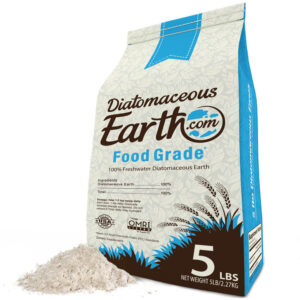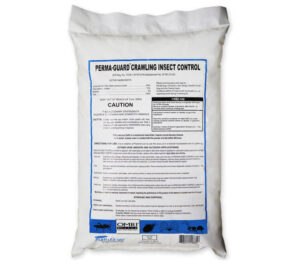Greenhouses are great for extending your growing season and protecting plants from outdoor extremes—but they also create the perfect environment for plant diseases. High humidity, poor airflow, and dense plant spacing can lead to rapid spread of fungal, bacterial, and viral infections that damage or even wipe out entire crops.
In this guide, we’ll explore the most common greenhouse diseases, how to spot them early, and how to prevent and manage outbreaks effectively.
Why Diseases Thrive in Greenhouses
While greenhouses offer control over temperature and moisture, these same factors can lead to conditions that favor plant pathogens. Key contributors include:
-
High humidity (above 70%) encouraging fungal growth
-
Warm temperatures speeding up bacterial and fungal cycles
-
Stagnant air allowing spores and pathogens to settle
-
Crowded plants limiting airflow and spreading infection
-
Wet leaves and soil creating breeding grounds for pathogens
Understanding which diseases to watch for is your first step in prevention.
1. Powdery Mildew
Type: Fungal
Common Hosts: Tomatoes, cucumbers, peppers, herbs, ornamentals
How to identify:
-
White or gray powdery spots on leaves and stems
-
Leaves may yellow, curl, or drop
-
Can spread rapidly in dry conditions with high humidity
Prevention & treatment:
-
Increase ventilation and reduce humidity
-
Use sulfur-based fungicides or neem oil
-
Avoid overhead watering
-
Remove infected leaves immediately
2. Botrytis (Gray Mold)
Type: Fungal
Common Hosts: Strawberries, tomatoes, lettuce, beans, ornamentals
Symptoms:
-
Gray, fuzzy mold on flowers, leaves, or stems
-
Brown spots on petals or leaf edges
-
Infected tissue becomes soft, mushy, and collapses
Management tips:
-
Prune overcrowded plants to improve airflow
-
Keep humidity below 85%
-
Remove dead leaves and debris regularly
-
Apply biofungicides like Bacillus subtilis
3. Damping-Off Disease
Type: Fungal (Pythium, Rhizoctonia, Fusarium)
Common Hosts: Seedlings of most vegetables and flowers
Signs to look for:
-
Seedlings wilt and fall over at soil line
-
Brown, mushy stems or roots
-
Poor germination rates
How to prevent it:
-
Use sterile potting mix and clean trays
-
Avoid overwatering
-
Improve drainage in seed-starting containers
-
Water with a mild hydrogen peroxide solution (diluted)
4. Downy Mildew
Type: Fungal-like (oomycete)
Common Hosts: Lettuce, basil, cucumbers, spinach
How it appears:
-
Yellow or pale green patches on top of leaves
-
Gray-purple fuzz underneath leaves
-
Rapid leaf drop in severe cases
Control methods:
-
Remove and destroy affected plants
-
Reduce humidity and increase airflow
-
Apply copper-based fungicides early
-
Rotate crops to prevent reinfection
5. Root Rot
Type: Fungal (Phytophthora, Pythium)
Common Hosts: Tomatoes, peppers, cucumbers, herbs
Symptoms:
-
Wilting despite adequate watering
-
Yellowing leaves
-
Roots appear brown, mushy, or smell foul
Prevention strategies:
-
Use well-draining soil or containers
-
Don’t let pots sit in standing water
-
Sanitize pots and tools between uses
-
Apply beneficial microbes or mycorrhizal fungi
6. Leaf Spot Diseases
Type: Fungal or bacterial
Common Hosts: Peppers, tomatoes, eggplants, ornamentals
How to recognize:
-
Brown, black, or tan spots on leaves
-
Spots may have yellow halos
-
Leaves may curl or drop prematurely
Prevention tips:
-
Space plants to reduce leaf-to-leaf contact
-
Avoid wetting foliage during watering
-
Apply neem oil or copper sprays
-
Remove infected leaves promptly
7. Bacterial Wilt
Type: Bacterial (Ralstonia solanacearum)
Common Hosts: Tomatoes, peppers, eggplants
What it looks like:
-
Sudden wilting of leaves without yellowing
-
No recovery after watering
-
Stem cross-section may ooze white bacterial slime
What to do:
-
Remove and destroy infected plants—no cure
-
Don’t compost infected material
-
Rotate crops and avoid planting susceptible crops in infected soil
-
Use disease-resistant varieties if available
8. Tomato Mosaic Virus (ToMV)
Type: Viral
Common Hosts: Tomatoes, peppers, tobacco
Symptoms:
-
Mottled light/dark green leaves
-
Leaf distortion and curling
-
Fruit may appear misshapen or discolored
How to control:
-
Remove and destroy infected plants
-
Disinfect tools and hands frequently
-
Avoid tobacco products in the greenhouse (can spread virus)
-
Use virus-resistant seed varieties
Common Greenhouse Diseases at a Glance
| Disease Name | Type | Affects | Key Symptoms | Control Tips |
|---|---|---|---|---|
| Powdery Mildew | Fungal | Most crops & flowers | White powder on leaves | Improve airflow, apply sulfur spray |
| Gray Mold (Botrytis) | Fungal | Lettuce, berries | Gray fuzzy mold, brown leaf tips | Prune, reduce humidity, use biofungicides |
| Damping-Off | Fungal | Seedlings | Seedlings collapse near soil line | Use sterile soil, improve drainage |
| Downy Mildew | Oomycete | Leafy greens, basil | Yellow leaf patches, fuzzy underside | Remove affected leaves, apply copper |
| Root Rot | Fungal | Tomatoes, herbs | Mushy brown roots, wilting plants | Don’t overwater, use microbial solutions |
| Leaf Spot | Fungal/Bac | Peppers, ornamentals | Brown/black leaf spots with yellow halo | Remove leaves, improve air circulation |
| Bacterial Wilt | Bacterial | Solanaceae family | Sudden wilting, white slime in stems | Remove plants, disinfect tools |
| Tomato Mosaic Virus | Viral | Tomatoes, peppers | Mottled leaves, distorted fruit | Use resistant seeds, sanitize hands |
How to Prevent Greenhouse Disease Outbreaks
1. Maintain Good Airflow
-
Use circulating fans to reduce humidity pockets
-
Don’t overcrowd your plants
2. Sanitize Regularly
-
Disinfect tools, trays, benches, and pots
-
Wash your hands or use gloves when handling plants
3. Control Watering
-
Water at the base—not over the leaves
-
Let topsoil dry slightly between watering sessions
4. Rotate Crops
-
Avoid planting the same crop in the same spot repeatedly
-
This disrupts disease life cycles
5. Inspect Plants Weekly
-
Remove yellowing or spotted leaves immediately
-
Watch for wilting, mold, or unusual growth
Conclusion: Stay One Step Ahead of Greenhouse Diseases
Even the most experienced gardeners deal with greenhouse diseases—but early detection, smart prevention, and good hygiene can stop them in their tracks. Keep your greenhouse environment clean, dry where it needs to be, and ventilated, and you’ll be giving your plants their best shot at success.
Quick tip recap:
-
Best prevention: airflow + sanitation
-
Common culprits: powdery mildew, damping-off, root rot
-
Fast action: remove infected parts, isolate if needed
-
Top tools: neem oil, copper spray, biofungicides, clean hands
Need help diagnosing a specific plant problem? Drop your symptoms or plant type in the comments—I’ll help you identify and treat the issue before it spreads. Let’s keep your greenhouse clean and your plants thriving.


